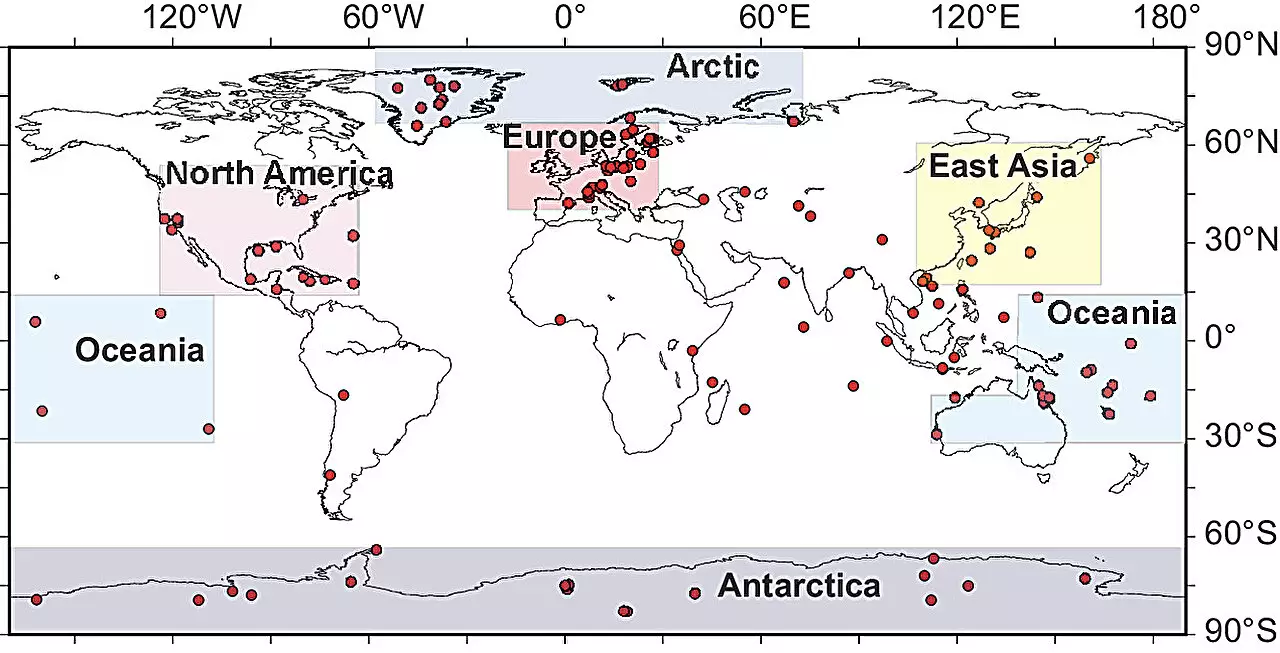The concept of the Anthropocene, which signifies a new geological epoch characterized by significant human impact on Earth’s geology and ecosystems, has stirred considerable discussion among scientists. A recent study spearheaded by a collaborative team of Earth scientists from prestigious institutions in Japan and Australia marks a pivotal moment in this discourse. Published in the Proceedings of the National Academy of Sciences, the research asserts that the 1950s represents the most probable start of the Anthropocene, emerging as a point of significant planetary change primarily driven by human activities.
This assertion reinvigorates the debate first ignited by Nobel laureate Paul Crutzen in 2002, when he proposed that the Holocene epoch was supplanted by the Anthropocene due to the observable effects of human activities. The implications of this reclassification extend far beyond academic semantics; they resonate within social, environmental, and policy-making frameworks, emphasizing the urgency of addressing human-induced changes to our planet.
The researchers meticulously analyzed three historical candidates for the beginning of the Anthropocene: the late 1800s, the early 1900s, and the mid-20th century. Each period offers compelling arguments based on distinct markers of ecological and geological change. The late 1800s, coinciding with the onset of the Industrial Revolution, is significant for the widespread dissemination of industrial pollutants like lead. This period also marks early alterations in nutrient balance, indicating a transformative human influence on the environment.
The early 1900s introduces additional complexities, as it saw changing ecosystems reflected in pollen analysis, a surge in black carbon emissions, and shifts in stable isotope ratios. These markers are critical for understanding humanity’s expanding footprint on Earth during this pivotal time.
However, it is the mid-20th century that the study designates as the most salient period, characterized by substantial and lasting changes. Known for the proliferation of synthetic materials such as plastics and the advent of nuclear technology, this era showcased unmistakable markers of human impact. Disturbing trends related to global warming began in earnest during this time, further solidifying the argument for the 1950s as the period marking the Anthropocene’s official start.
When appraising the evidence for the Anthropocene’s inception, one must grapple with the measurable and observable impacts that define this epoch. The research team aptly suggests that the 1950s provide the strongest evidence for geological change. The global consequences of this transformation are likely irreversible, fundamentally altering Earth’s systems. If humanity were to vanish, the damage inflicted during this era would take millennia to revert to pre-Anthropocene states, underscoring the severity of our current trajectory.
This assertion poses critical reflections on humanity’s role as stewards of the planet. The understanding that the consequences of our actions may echo through geological time necessitates a profound re-evaluation of our relationship with the environment. It also calls into question the adequacy of current policies and practices aimed at mitigating ecological degradation.
The recognition of the Anthropocene as a distinct epoch not only alters scientific frameworks but also has significant implications for global policy-making. The crystallization of the 1950s as a starting point calls for immediate and robust action to address the issues borne from human activities. This represents a challenge for leaders, policymakers, and citizens alike, as they must grapple with the historical context of their decisions and strive to create sustainable futures.
Furthermore, this study emphasizes the urgency with which climate change must be treated, stressing that delayed action will only amplify the irreversible changes already initiated in the mid-20th century. Scientists and environmentalists alike recognize that the Anthropocene serves as a clarion call for a more sustainable interaction with our planet, urging society to act decisively to restore and protect the ecosystems that remain under threat.
The assessment of the Anthropocene provides a critical lens through which we can view humanity’s impact on the planet. As scientists continue to illuminate the consequences of our actions, the resultant understanding must galvanize global cooperation and policy frameworks aimed at preservation and rehabilitation. The narrative underscored by the 1950s as the epoch’s commencement is not merely academic; it carries profound significance for our responsibilities today and for the future generations that will inherit the Earth.


Leave a Reply